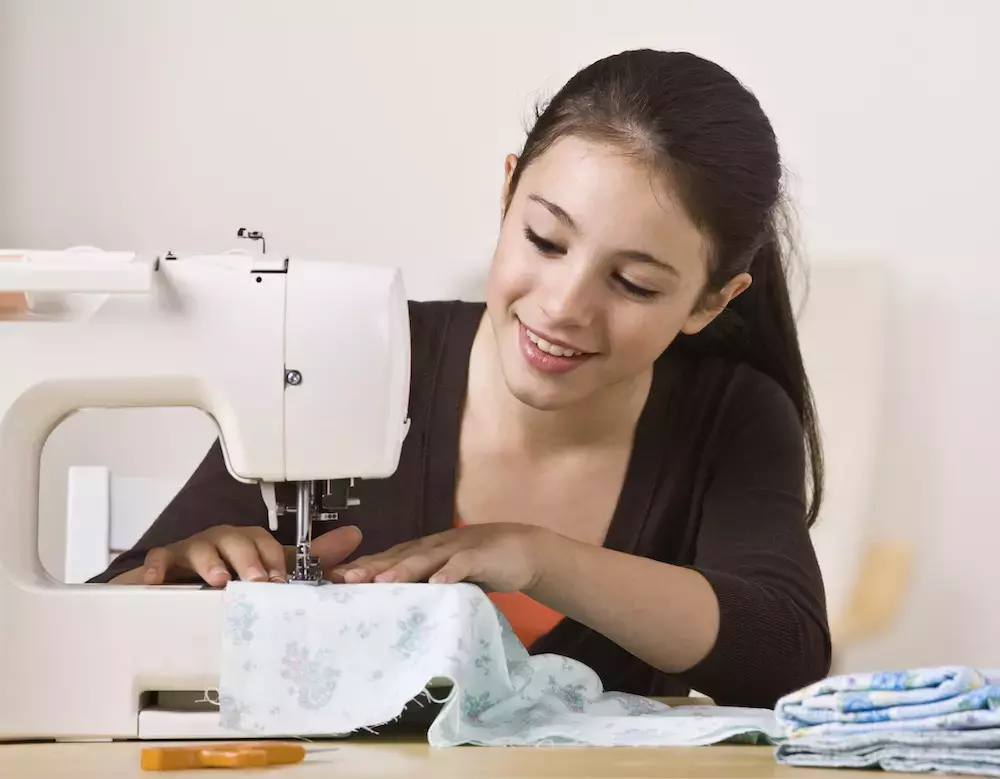New to Sewing? 6 Steps to Get You Started
2020-05-04
Whether you have dreams of designing intricate quilts, or exquisite garments, you’ve got to start somewhere. Here we’ve laid out the six necessary steps to prepare for your very first project.
Remember to always break things down into easy steps. Sewing should be simple, but machines and having too many options can make an easy project seem overwhelming.
Enjoy the sewing process, rather than stress over it!
Follow these steps for a stress-free introduction to sewing.
Get Your Basics—Sewing Machine and Essential Tools
Some equipment is a must-have for sewing. That includes sewing as a hobby or starting a new side hustle. You must have a sewing machine. You don’t have to run out and buy a new one.
Don’t spend hundreds of dollars on your first machine. Review a few buying guides or read reviews to find a machine that suits your needs. Your first machine doesn’t need to be fancy with all the features. Pick a machine that easily fits within your budget. You can always upgrade later if you find yourself sewing more and needing additional features.
Of course, a sewing machine isn’t the only thing you will need to get started. Here’s a shortlist of necessary tools:
- Fabric (more on this in a moment)
- Thread
- Fabric scissors
- Pins or clips
- Tape measure
- Seam ripper
- Iron
- Ironing board
- Chalk pencil or something similar
- Bobbins
You can explore with other notions later, for now, focus on the basics.
Go Fabric Shopping!
Fabric shopping is ridiculously fun. You can order fabric online, or head to a local shop. Your first project will guide you on how much fabric to purchase, but you can start with some bits of fabric to help you learn.
Pick up a few fat quarters, and then some chambray, rayon, or even canvas. Try out different types of fabric to get the feel of the difference and how each fabric works and behaves with your sewing machine. For example, minky fabric or a 4-way jersey knit will stretch, pull, and bunch easily. However, your cotton fabrics won’t.
You can get a quarter yard of different materials, or search the scrap bin at a fabric shop. These are scraps to practice sewing straight lines or other techniques without wasting a bunch of valuable material.
Learn To Use Your Machine
Although it seems tedious, read your user manual. Next, setup and take apart your machine two or three times. After you’re comfortable handling the machine parts, start sewing straight lines on your spare fabric.
Before you get started on your first project, you should be able to sew a straight line. No one’s expecting perfection! But, it should be relatively straight.
You can draw lines on paper and then stitch over them or draw right onto your fabric. This practice will also help you get comfortable with your machine and working at different speeds.
Choose A Project
Always choose a simple project to start. If you want to quilt, start with one square, or a baby quilt. If you want to make clothes, consider a skirt, or a simple dress. Simplicity will allow you to redo the project with ease and complete it quickly for that smashing sense of accomplishment.
You can find many easy to follow patterns online. Pinterest is an exceptional place for resource patterns. But, it is useful to work with traditional tissue paper printed patterns which are available at craft stores.
Start Sewing
When you sew your first project, remember to give each step equal importance. Yes, it is important to press your seams. Yes, it is important to pin or clip. Again, sewing should be fun overall, but everyone has a few tidbits that they don’t enjoy, but it’s just all part of the process.
Find Valuable Learning Resources
As you develop your new skills, you’ll need reliable resources. As mentioned earlier, you can find great patterns on Pinterest, and GoldStar Tool has all the tools you need to make your first project!
Blogs are a fantastic how-to resource, and YouTube is great if you need visual content. Find one or two YouTuber, then stick with them.
When you overload yourself with too much information, too many patterns, or too many projects, it’s easy to feel overwhelmed. Instead, keep sewing simple. Rely on a few valuable resources. Work on one or two projects.
Now, get sewing!





